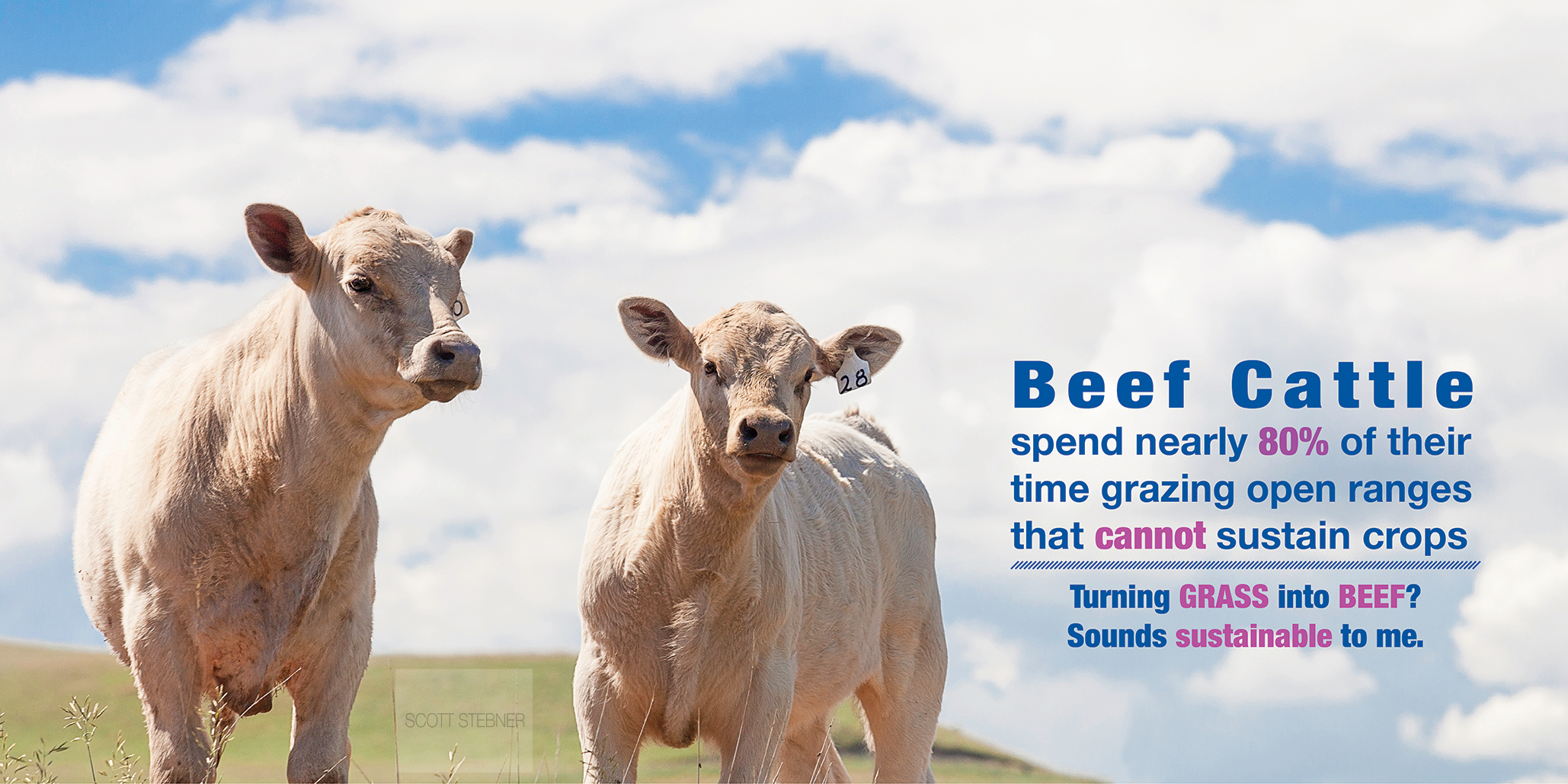Grass-fed beef. What does that mean to you?
Personally, I love the taste of grass-fed beef, but I think there’s a misconception out there about how beef cattle are raised in the process. There’s the idea that products that are not labeled “grass fed” have been on a steady diet of corn their entire lives, which is not exactly true. While traditional cattle are usually finished with a high grain diet to put on extra pounds, meat, and fat (which results in taste), they spend the vast majority of their time grazing out in the open range or pastures. Cattle that are only fed grass have a much more difficult time putting on the fat needed to grade Choice or Prime which is one of the reasons grass-fed beef is significantly more expensive.
Cattle spend about 80% of their time grazing ranges that cannot support crops. Let me explain. They’re great grazers that can roam steep hills that no tractor could dream of scaling. This means the land used to raise cattle for the vast majority of their lives is land that cannot be used for grain crops or vegetables to feed people. True, many cattle states have flat sections like my current state of Kansas. However, during the winter months, cattle are often grazed on harvested fields thereby converting forage material that was destined to be plowed under into lean and highly nutritious beef. Cattle grazing, if done correctly as most ranchers do, simulates a natural and sustainable process that not only uses the land for commercial gain but improves it as well.
Nothing is wrong with grass-fed beef. I love it when I can afford it. However, it’s important to note that the vast majority of the beef you buy was primarily raised on open pastures converting grass and weeds into a nutritious product. In the process of creating a beef product, cattle also fertilize fields, improve the density of perennial grasses, and help nature with what was once the bison’s job.
Dialogue is always great for agriculture. If you buy grass-fed beef, why do you do it? Is it for the taste, the practice, or something else? Is 80% grass fed enough for you?
Disclaimer: I know a few very successful agricultural communicators have made a great living and presence with including quotes, facts, and text with pictures. I don’t mean to copy or say that my idea of doing so is original. It just made sense for this post, and I enjoyed doing it...that's all.
Scott Stebner is a husband, father, and Kansas agricultural photographer and videographer that creates cinematically-styled environmental portraits to empower the agricultural community. Click HERE to get in contact with Scott.
